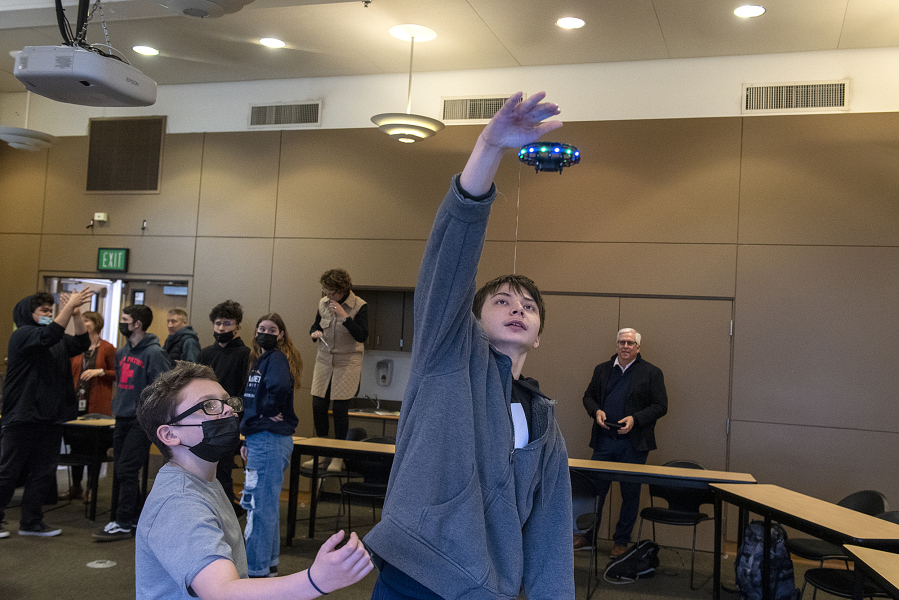As a major expansion project is expected to begin soon at the Washington School for the Deaf, design crews have been taking the time to engage with faculty and students on how the construction will go and what will change about their building.
During a Monday morning assembly, representatives from Skanska — an international development and construction company with a regional operation in Portland — introduced middle and high school students to a set of remote-control drones that were being used to map the property.
From up in the air, the drones can take unique images of the building and measure new areas for Skanska’s scheduled construction. The project, which is slated to begin in spring 2023, will feature an entirely new school with a gymnasium, cafeteria and media center on the north end of the property.
Construction is expected to be finished in time for the 2024-25 school year. Once complete, the remaining existing structure will be razed, making room for more landscaping to be done.
With the help of some of the design experts involved in the build, students learned about different types of drones, including more advanced ones that are used to do aerial landscape photography.
“It gives students a hands-on model of how Skanska works,” said Shauna Bilyeu, the school’s superintendent. “This was a great activity because our students are so visual; they don’t often get to have experiences like this.”
Students engaged with two types of drones during Monday’s assembly: smaller, no-touch drones that are fun to play with and watch fly, and a more technologically advanced camera drone that is similar to what’s being used in the design process.
Bilyeu intended for the lesson to not only be a fun way for students to learn about cutting-edge technology but to introduce the younger students to the number of changes they’d be seeing as design and construction begin in the coming months. The drones will continue to be used at various phases of construction to track progress and aid workers in completing the finished design for the new school building.
“They have done a great job of making sure to include the students as we progress through the design process,” Bilyeu said.
In the school, several design aspects are curated specifically for those who are deaf and hard of hearing.
“We’ve worked to incorporate elements based on the DeafSpace guidelines, which are a connection between the deaf experience and the building itself,” said Alan Helleck, the senior project manager at Skanska’s Portland office.
The company spoke with a number of consultants in the deaf community, he said, to learn how its approach might need to be different than with previous projects — widened hallways, rounded corners, and alcoves and eddies in the building facilitate the motion-based communication necessary for American Sign Language speakers.
“If you and I were walking down the street, we’d walk shoulder-to-shoulder,” Helleck said. “But those who speak ASL, obviously, they need more space for that conversation.”
The project, though still in the early stages of design and conceptualization, has opened Helleck’s eyes to several new elements of construction he hadn’t considered before.
“It’s an amazing opportunity to be involved in this project and helping to give back to this community,” said Helleck, a Vancouver native. “I’ve been working on my ASL, and I’ve taken two classes. It’s a far stretch to say I’m bilingual, but I’m getting somewhere.”




